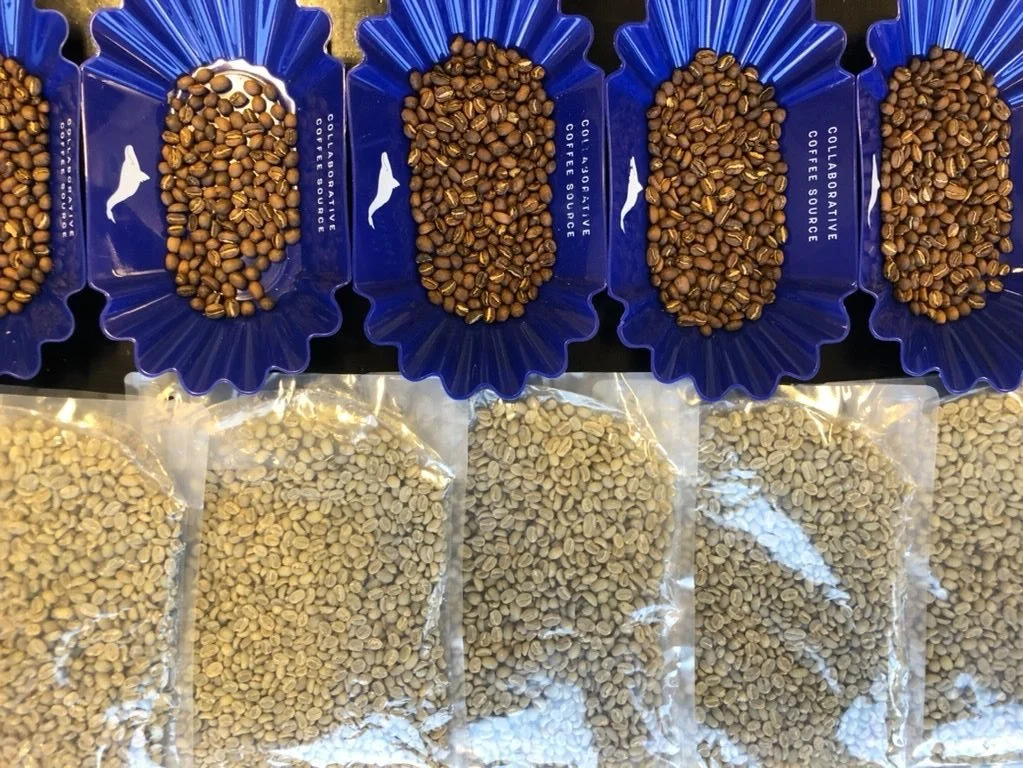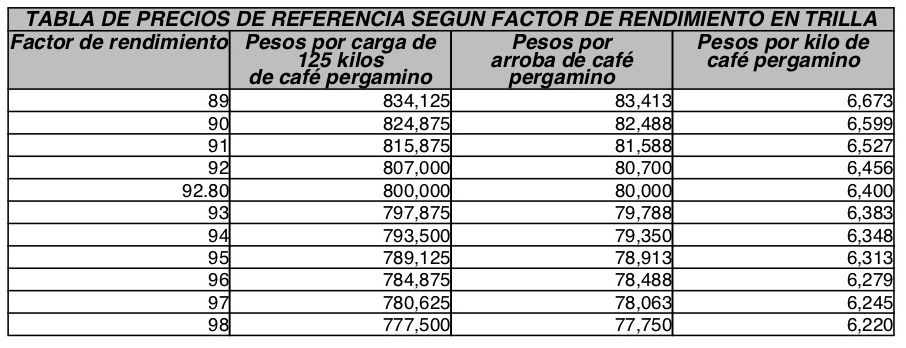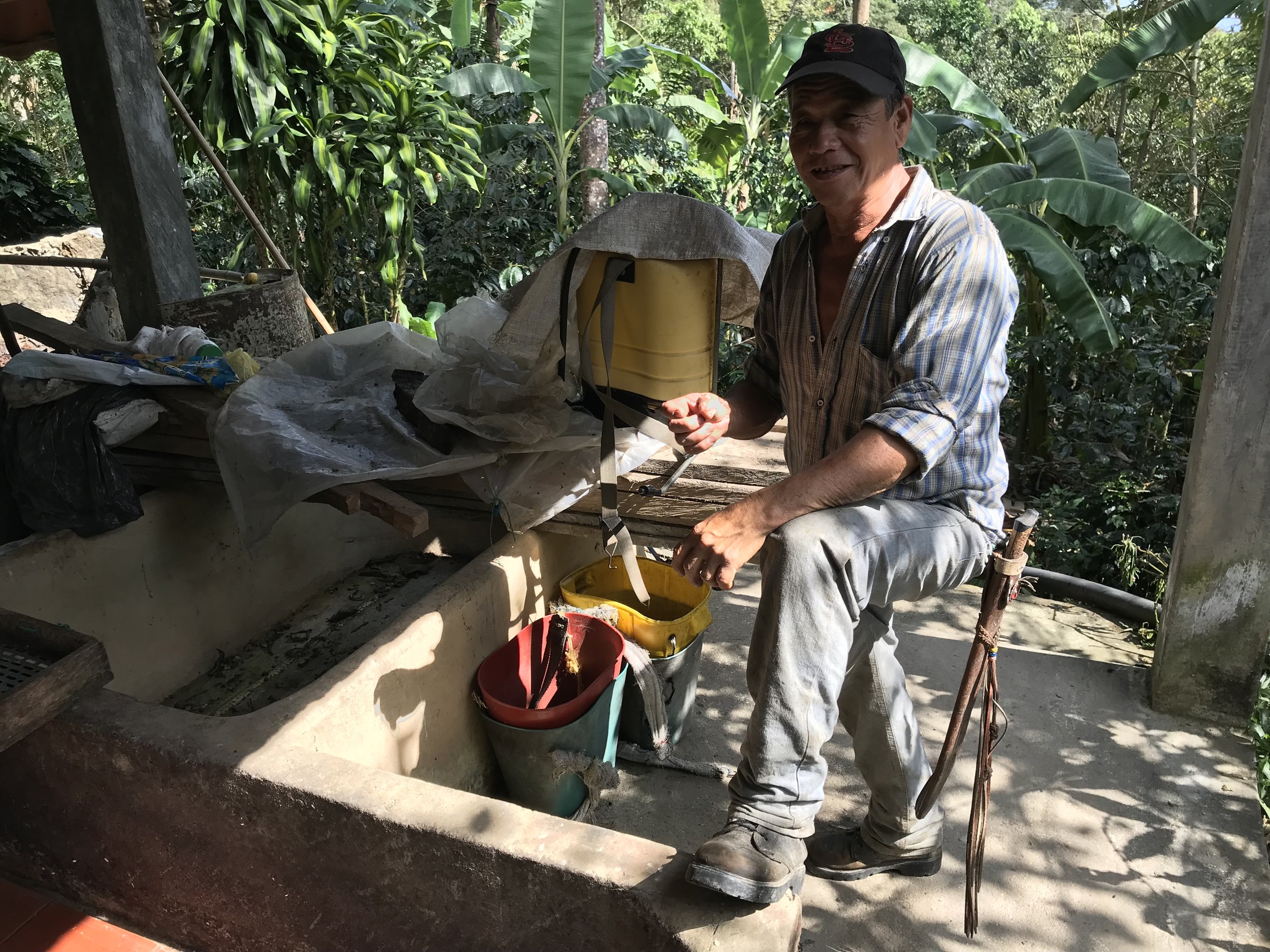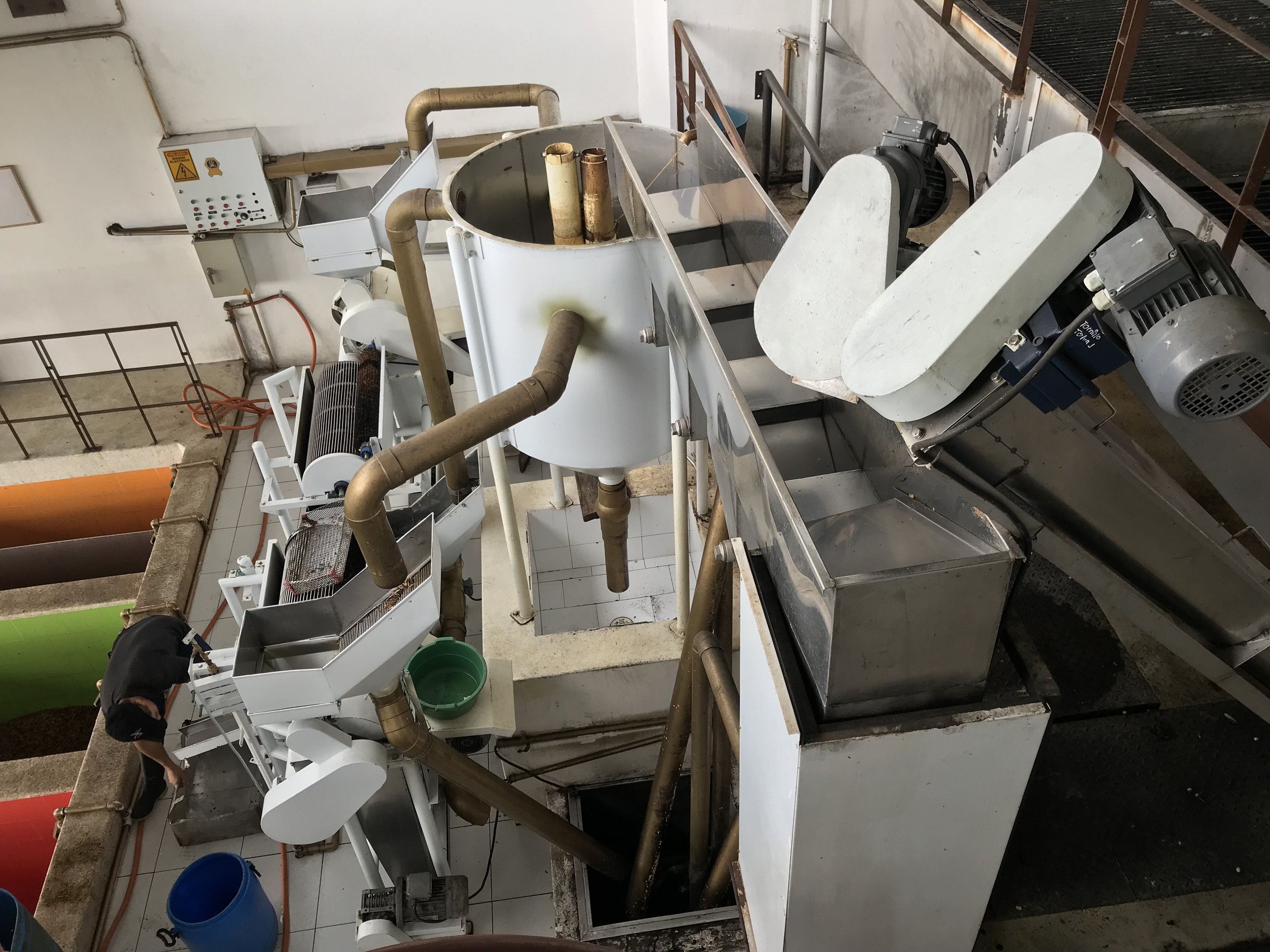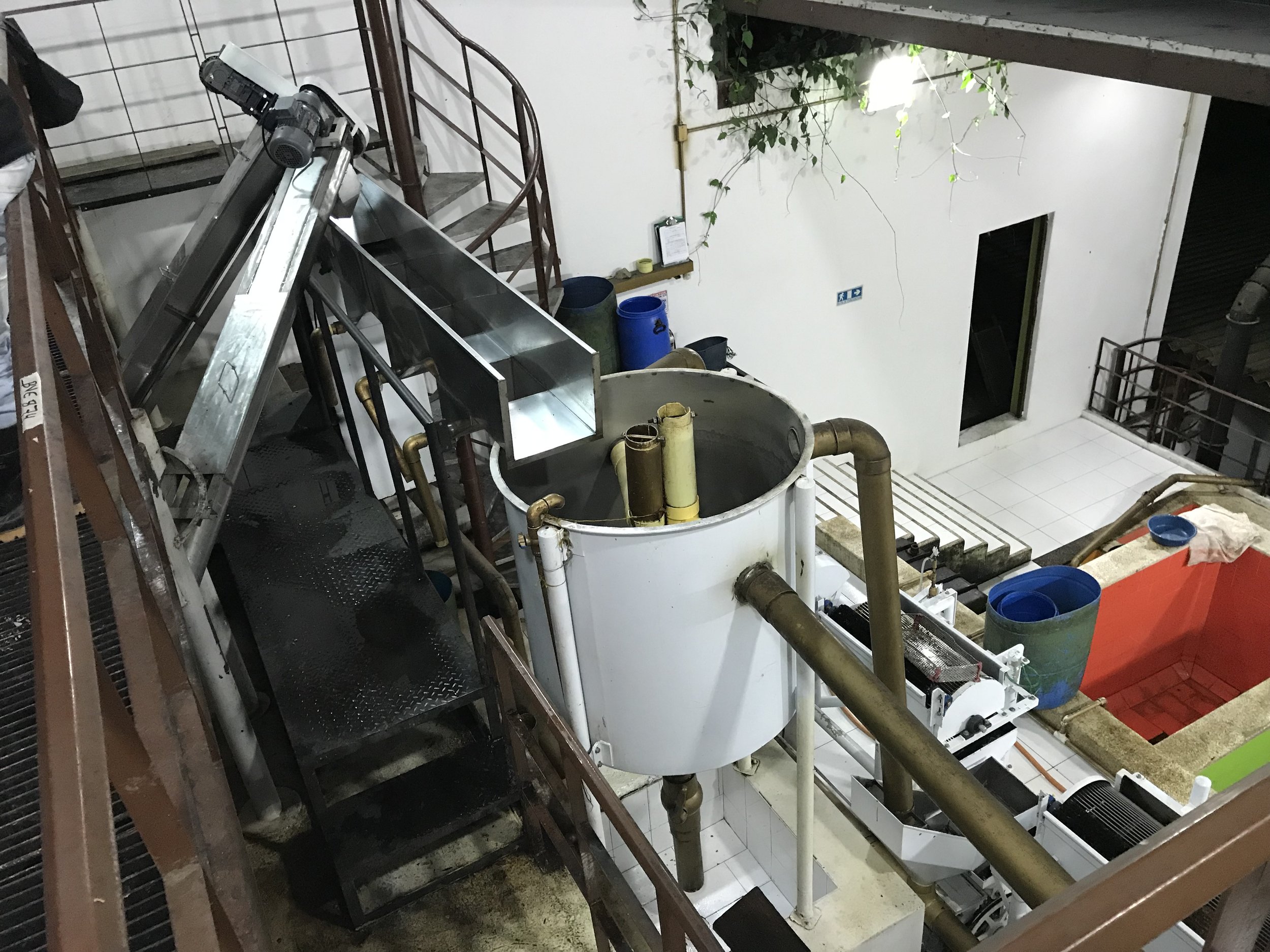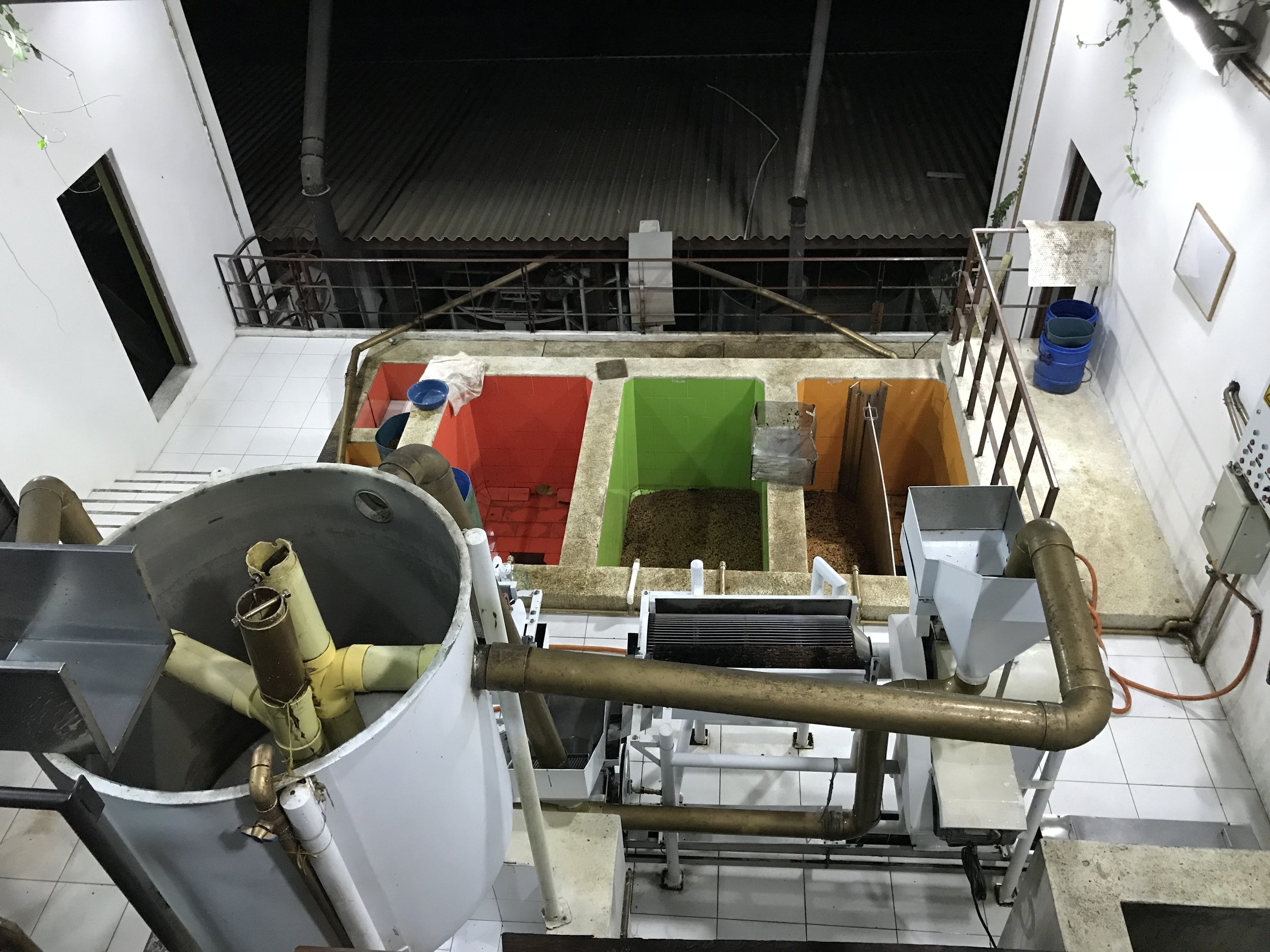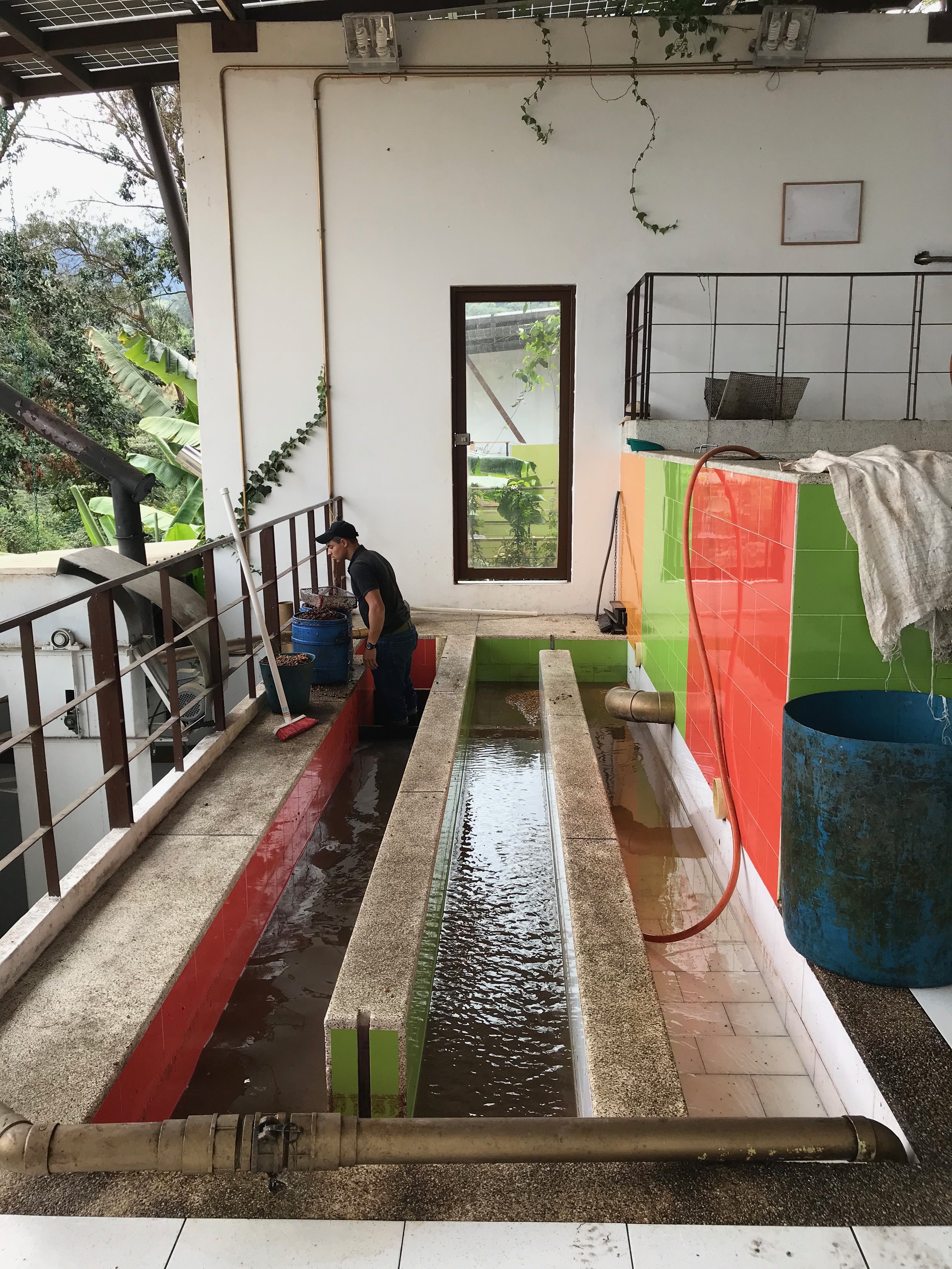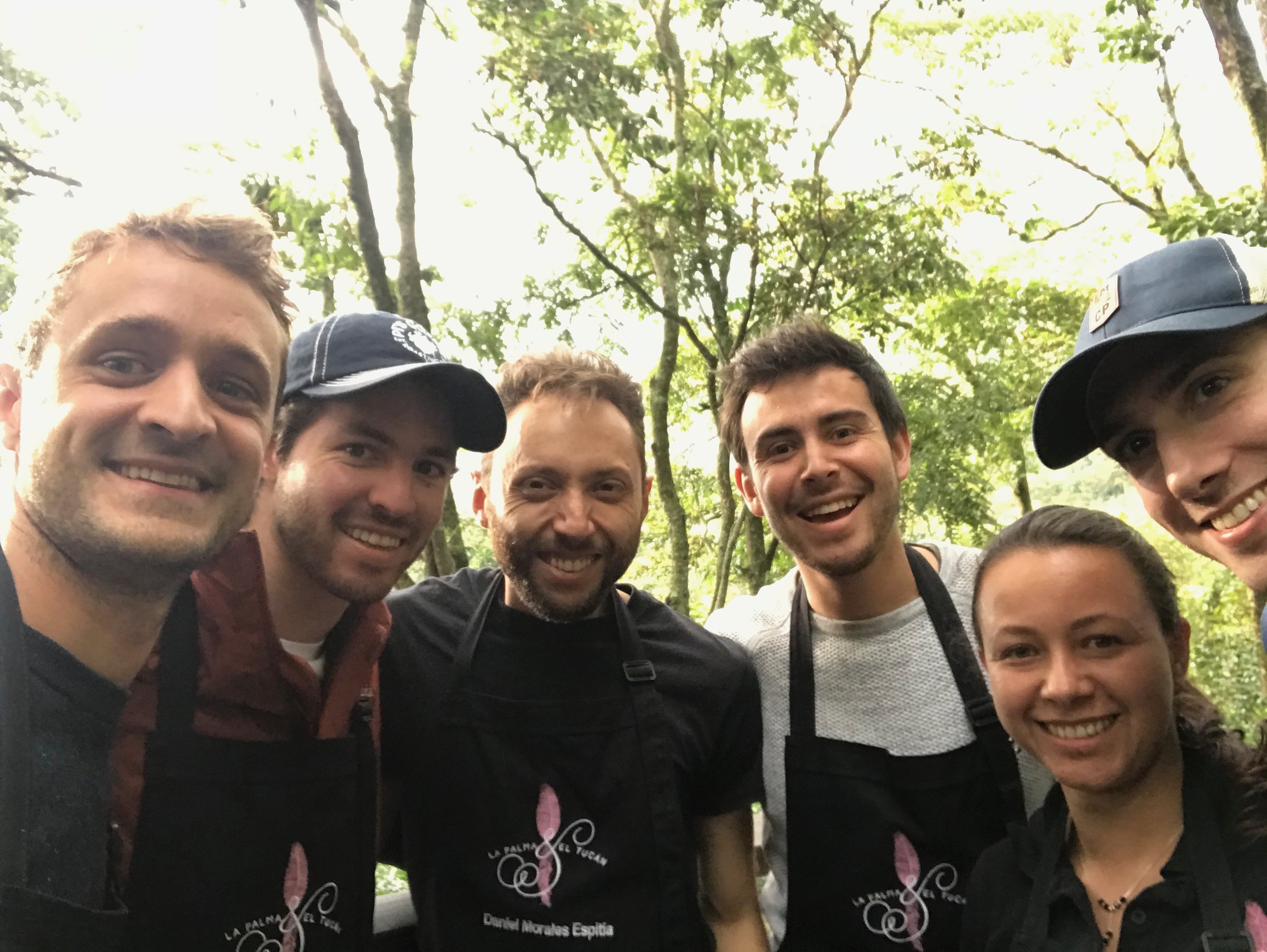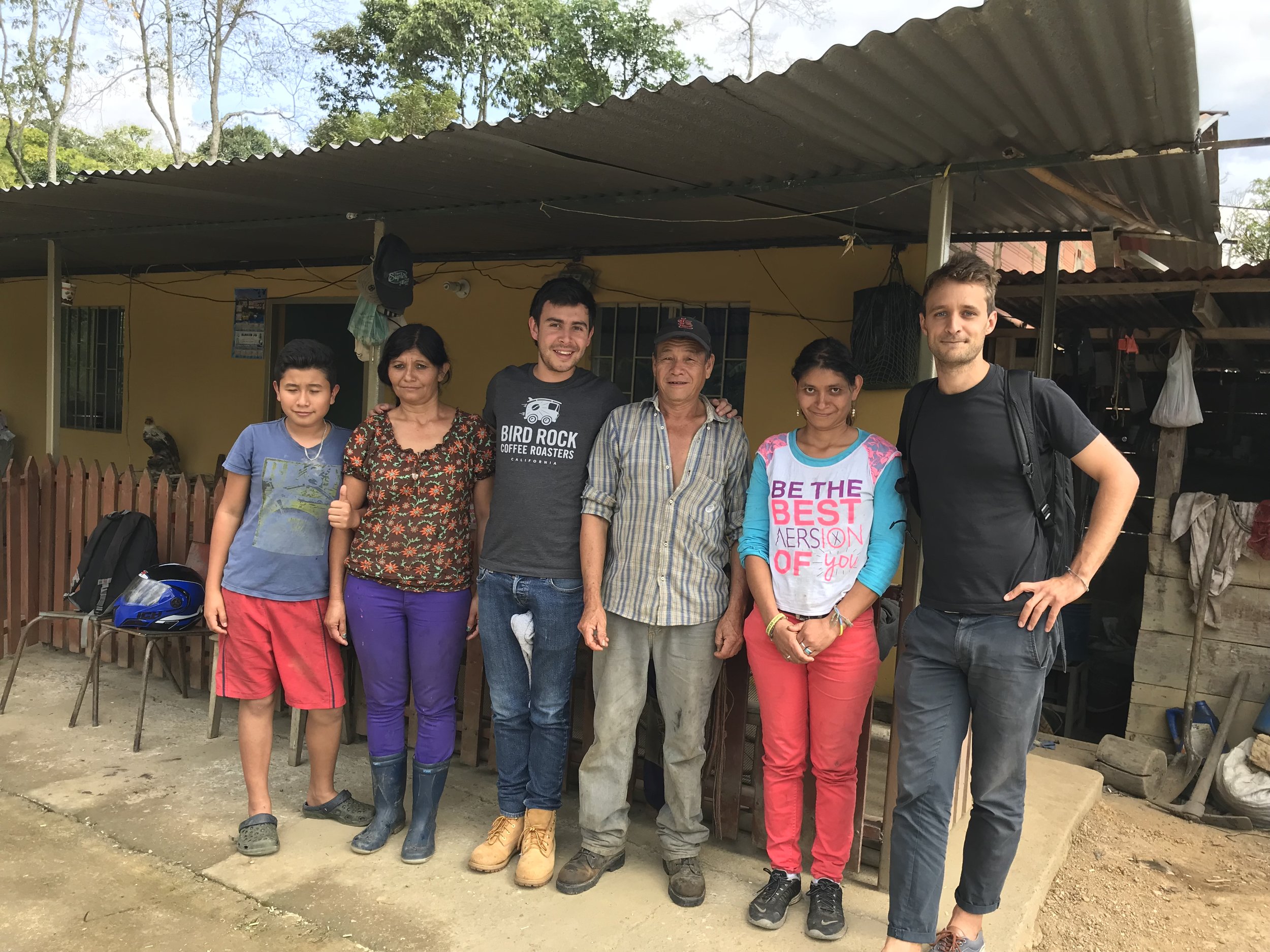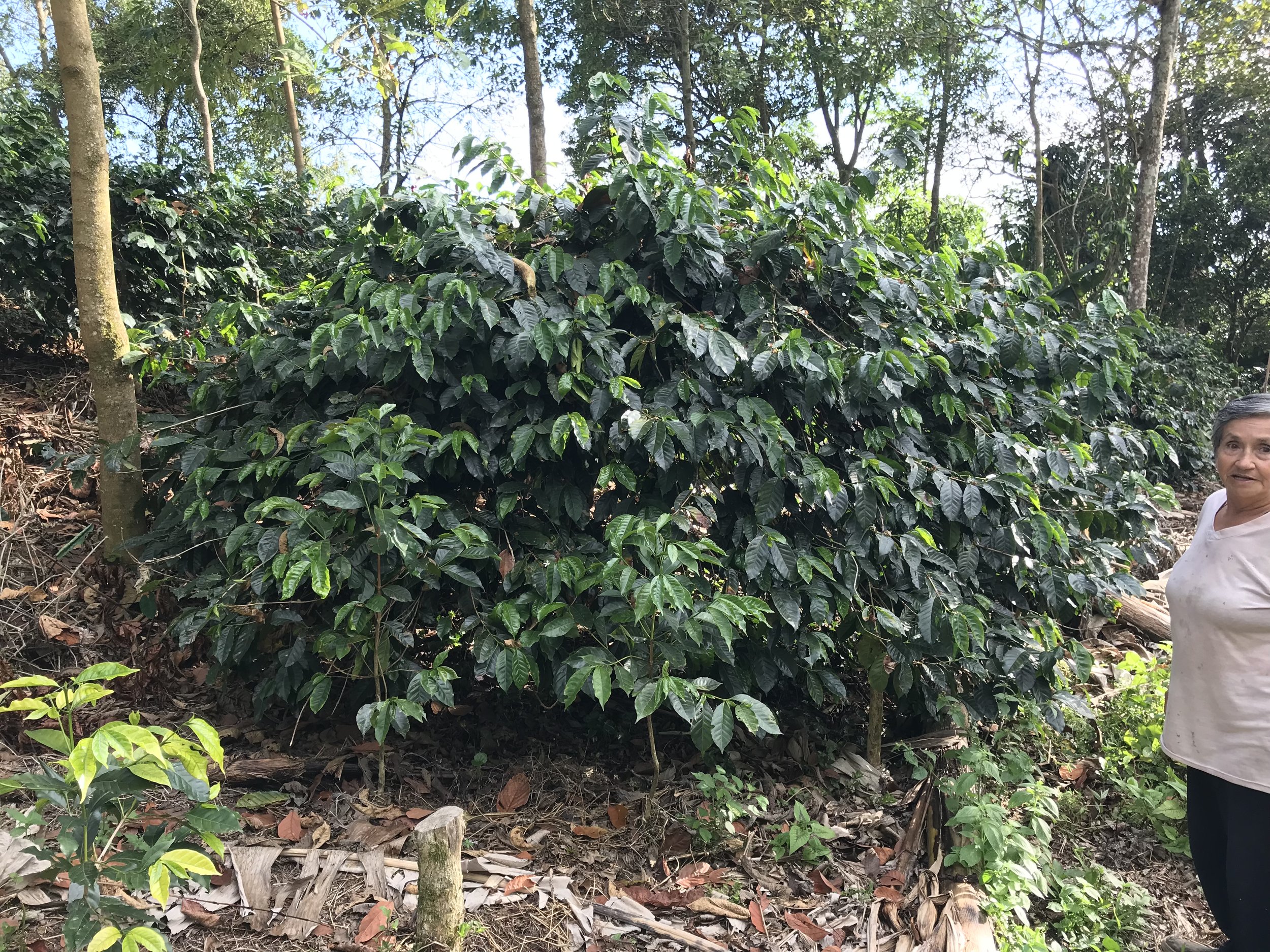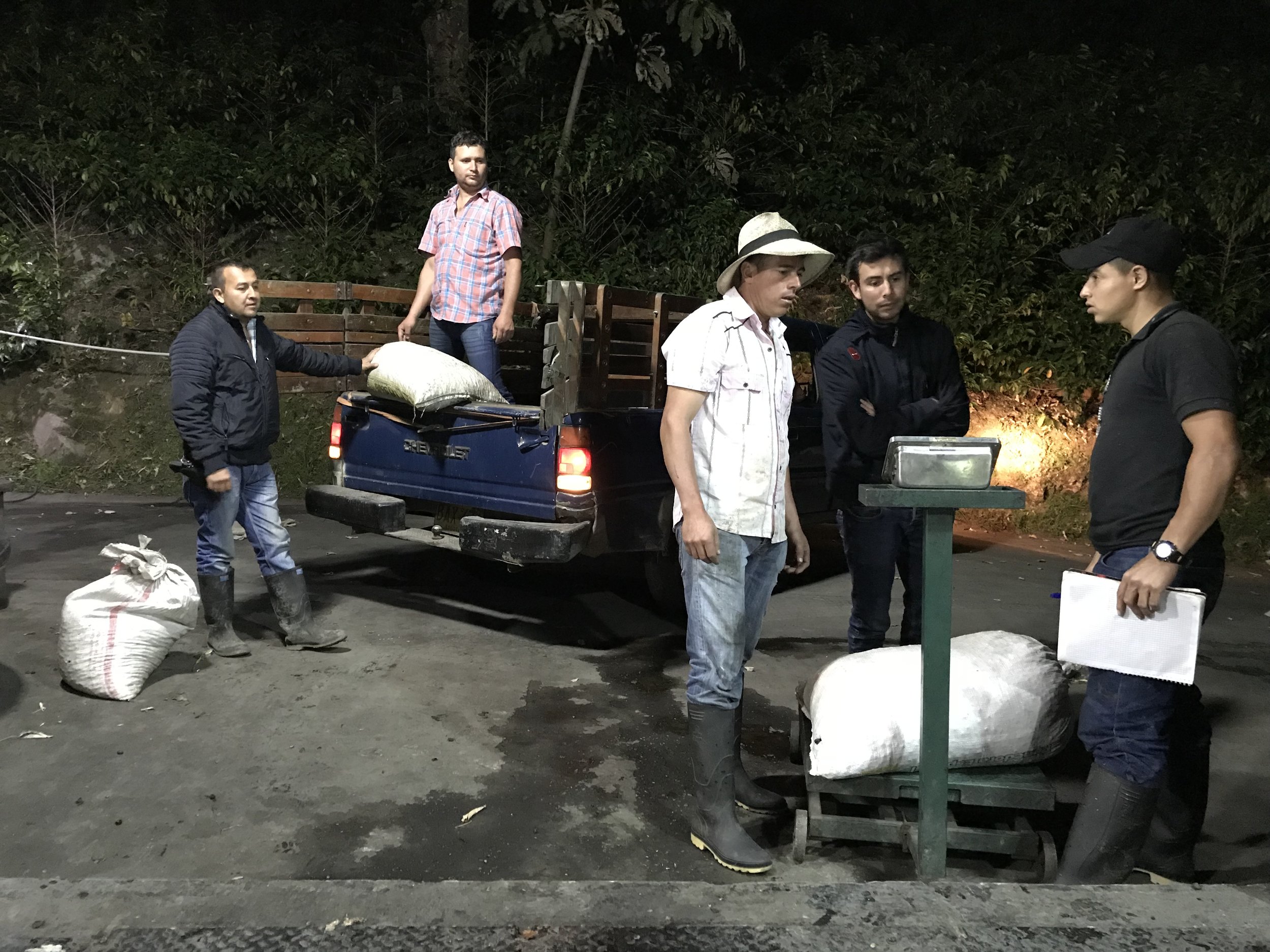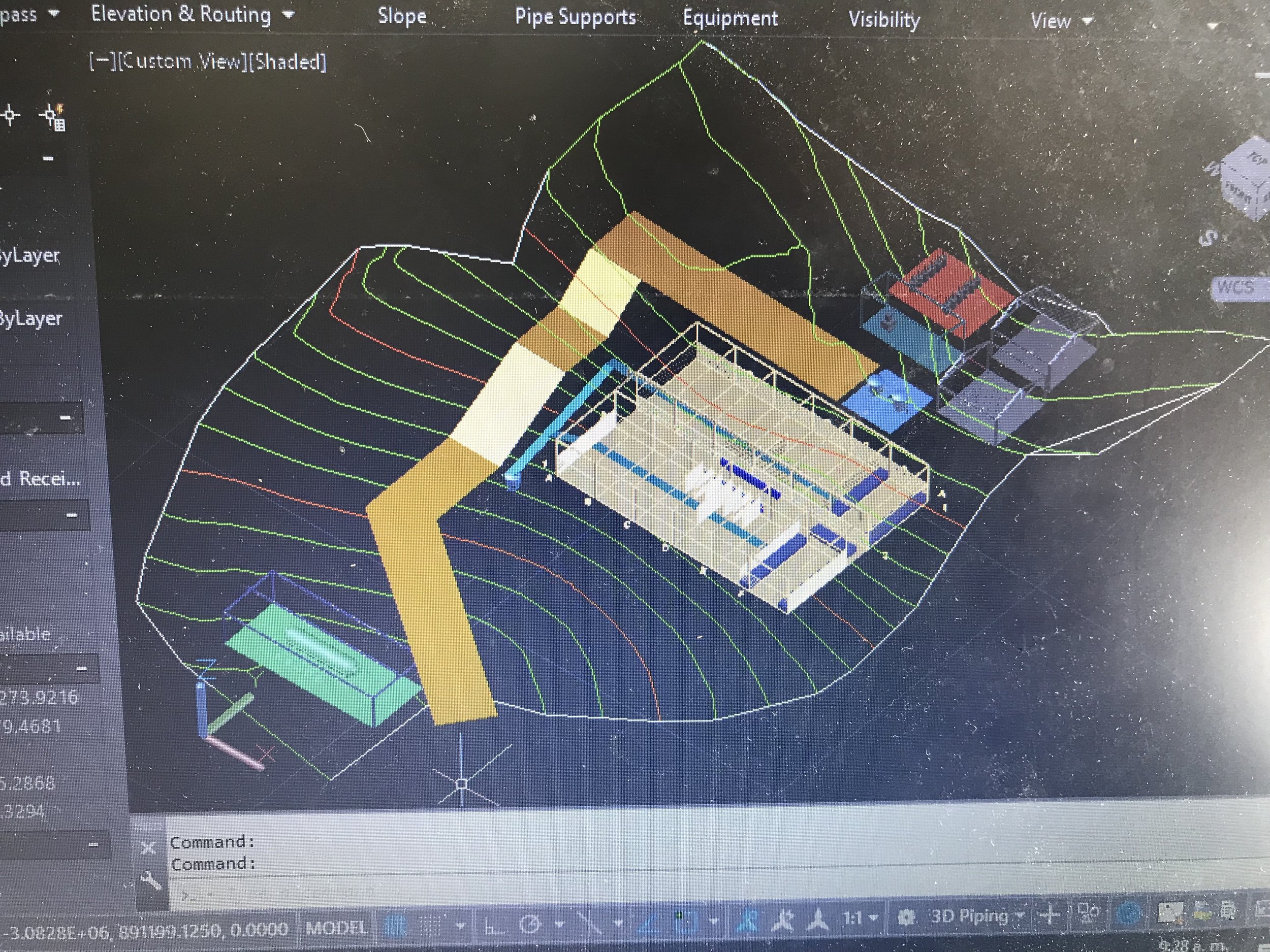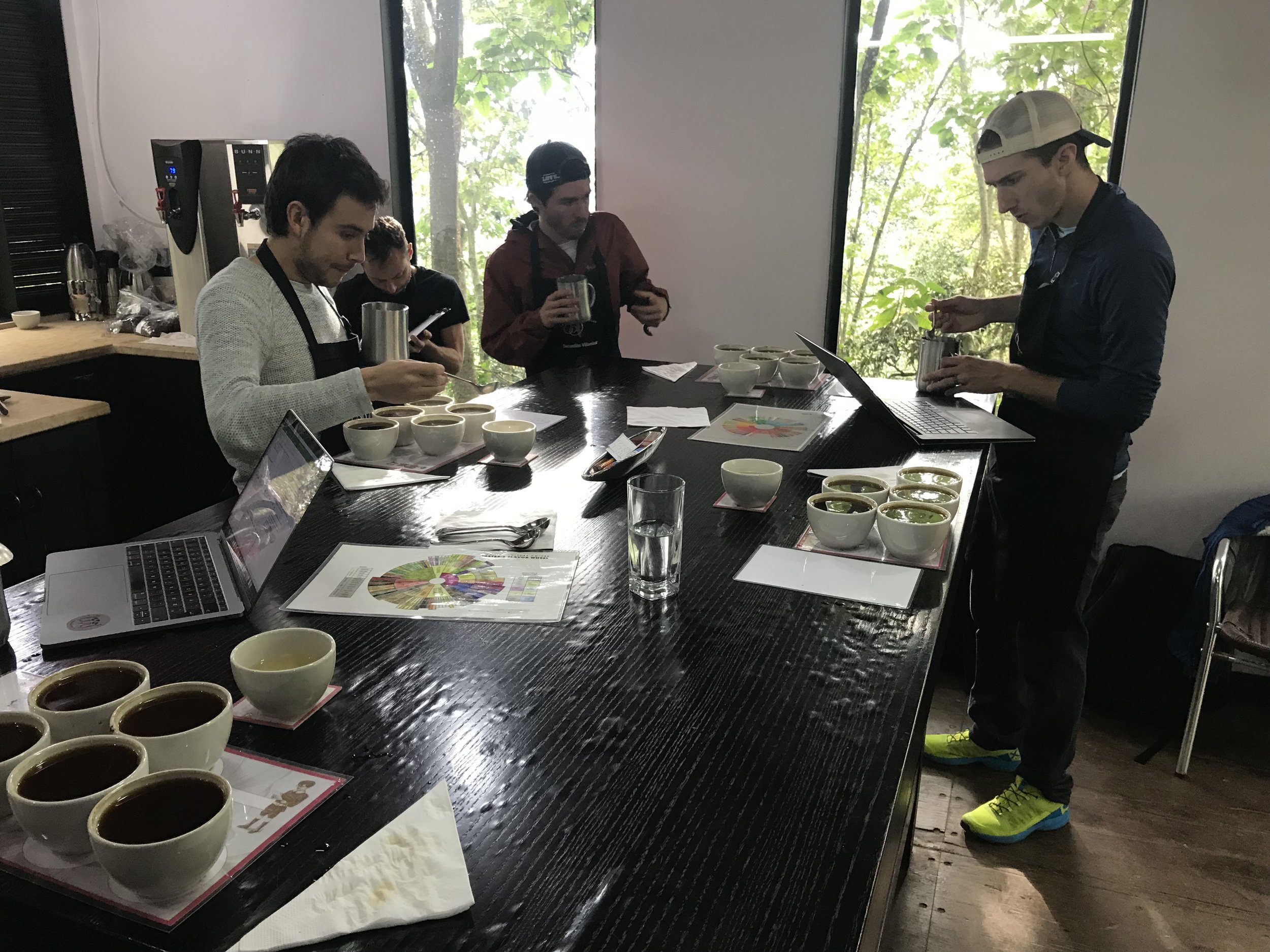This blog post is the first in a three-part series. Read Part 2, and Part 3.
I could probably write a book about La Palma y El Tucán (LPET). Instead I will limit myself to three blog posts.
I was lucky to travel to the LPET farm in August to make the CCS 2018-2019 selection, along with my team mate, CCS Global Buyer, Matt Hassell. Together we went behind the scenes to discover the strategy, science and hard work behind these stunning coffees.
In Part 2 of this blog series I will tell you about the famous processing and the laser focus on quality, and yes, we will review the crazy varietals they grow on their eighteen hectare farm. In Part 3 we will learn about LPET’s plans for increasing biodiversity and protecting farmer incomes with a new project.
Here in Part 1, what I really want to share with you is the positive social impact that the LPET team have on the local coffee growing community.
Let’s start at the beginning
Felipe Sardi and Elisa María Madriñan bought the LPET farm, located at 1600 masl in Cundinamarca, about 2 hours away from Bogota, and planted trees between August and December 2012. They employ 22 permanent workers and 60 to 70 seasonal pickers for the harvest.
The farm is eighteen hectares, four of which remain wild primary forest. The fourteen hectares in coffee production are separated into five plots: Typica, SL28, Sidra, Geisha and Java. This is the coffee that will become the LPET Estate and Varietals series, including Heroes Series nano-lots of 25kg. Also on the farm is the state-of-the-art LPET processing facility, where they process coffee cherries purchased from neighboring farms for the Neighbors and Crops Series.
The Neighbors and Crops Program:
The goal of the Neighbors and Crops program (N&C) is to produce finely crafted and diverse cups, while simultaneously helping producers with fair revenues.
To understand the LPET payment structure, you first need to understand how most coffee is bought and sold in Colombia.
A view of the farm from the neighboring mountain
The “FNC” Price
In Colombia, the standard way for producers to sell their coffee is to work with the Federación Nacional de Cafeteros (FNC). Created in the late 1920’s the federation is run by elected members, and boasts over 500,000 members. It is the largest agricultural NGO in the world.
One great reason for producers to join the FNC is their guaranteed purchase scheme. On any day of the year, producers can sell their coffee to the FNC at one of over 500 buying stations around the country. The price offered that day is based on the C-Price, with a differential of around 20% paid by the international market for coffee that meets the FNC’s strict export standards.
How does a producer, or anyone interested, learn the FNC price for a given day? Google “FNC precio café” and you will find this document:
Every week the FNC updates this spreadsheet with the current pricing. For logistical reasons, the price offered will depend on the region. The deeper you travel into the country the lower the price, to account for the logistical costs of transporting the coffee to port.
Let’s take a closer look at the second table.
This table shows the price paid by yield factor, or “factor de rendimiento.” The yield factor is the kilograms of parchment coffee required to obtain 70kg (a standard bag in Colombia) of green coffee. Lower numbers are the goal, it means there is less that is lost in milling.
We see here that for the best yield factor, 89, the price per carga (125kg of parchment) is 834,125 Colombian pesos (COP). With today’s rate it is $263.40 USD, or $2,10 USD/kg of parchment coffee.
The LPET Model
Felipe and Elisa’s goal from the outset was produce the highest possible quality whilst creating a sustainable financial, social and economic model for neighboring coffee producers in Cundinamarca.
The challenges are many. The farmers in their area, about 200 in total, are small holders, most owning one hectare of land or less. With such limited space, it is almost impossible to build a processing facility that will result in high quality coffee. Additionally, the farmers mostly cultivate varieties that are known for their hardiness and disease resistance, but not for their cup quality, specifically Castillo. Plus, the region suffers another major sustainability issue, that is the absence of young coffee producers. Younger generations flock to the cities in search of more stable and profitable livelihoods, leaving an aging population of producers behind.
From the very beginning Felipe and Elisa aimed to create a long-term model that addresses multiple problems with multiple innovative solutions.
Sustaining coffee communities
When you travel around the LPET Farm and meet the neighboring producers, it is rare to meet a farmer under the age of thirty. The youngest producer I met was Faustino Reyes. He is 60 years old.
Faustino by his processing tanks
His land is adjacent to Dioselina’s farm. Dioselina, who recently passed away, worked together with her neighbor Carmen, who is 83.
If you ask any farmer in the region about their children, they always say “they live in Bogota, where they have a nice life and a better job.” The new generation don’t want to work on their parent’s farm. Between the low incomes that coffee offers and the close proximity of Bogotá, a large city with more economic opportunities, it’s a no-brainer for the children of coffee producers in Cundinamarca.
The question, of course, is who will produce coffee here in twenty years time?
Producer Carmen, Simon (Sales Representative at LPET) and Edwin (agronomist at LPET).
The late Dioselina on her farm, August 2018, aged 84. We are deeply saddened by the passing of this dedicated coffee producer.
Ensuring timely and selective picking
To ensure selective picking, LPET hire a team of pickers that they train themselves. This both guarantees picking of only the ripe cherries, and delivers pickers to the farms when they are needed.
The proximity to Bogota, and competition with new agricultural production such as industrial flower crops and palm oil plantations, makes it increasingly difficult to find pickers during harvest. Additionally, coffee producers are competing against coca plantations for labor around the country, especially in the south. Coca is the raw material for cocaine, and “raspachines,” or coca leaf pickers, earn much more than coffee pickers.
LPET can guarantee a team of pickers for every producer because they pay exceptionally well. The national average paid for cherry picking is about 450 COP per kilogram (about 14 cents USD). The average fee paid for pickers employed by the LPET Neighbors & Crops Program is around 800 COP per kilo, almost 80% more.
Producers do not have to advance the money to the pickers; LPET subtracts the fee for picking from their payment for the cherries.
State of the art processing
To manage the risks of processing on small lots of land, LPET buy cherries, instead of parchment. This takes much of the work, and the risk, from the producers, allowing them to focus on what they know best: how to produce beautiful and healthy coffee cherries from their land.
Timely transport
When buying cherries, it is essential they are delivered to the wet mill promptly to avoid problems with fermentation. This can be a challenge for producers, who may not have immediate access to the required transport.
LPET solved this problem by employing a fleet of trucks to collect cherries as they are picked and deliver them to the LPET farm for processing in their high-tech facility. This is a cost that LPET cover, saving the farmers time and money.
Faustino’s processing set up
Faustino told me the thing he loves most about working with LPET was the fact that “pickers are coming.” Finding people to pick your coffee cherries when they are perfectly ripe is one of the biggest challenges producers face in this region. “I ask pickers to come next Monday because my cherries will be perfectly ripe, and they tell me yes, but when Monday comes I don’t see them. A lot of my production is damaged because of that,” says Faustino. |
Encouraging environmentally sustainable practices
For every kilogram of cherries a producer sells to LPET, they receive 1kg of organic compost, created by LPET’s experienced team of agronomists and chemists. This free organic compost saves producers money, and reduces their reliance on chemical inputs year after year. Plus it improves the quality of the coffee.
Furthermore, from 2019 LPET will provide additional services to their N&C producers through a sister company called BIODIVERSAL. This company will work with the growing community to diversify crops, building environmental resilience and promoting income protection for growers. Stay tuned for Part 3 of this blog series to learn more!
LPET Pricing model
LPET base the price they pay for cherries on the FNC price. To this they add three potential premiums:
Quality premium = 65% of the base price:
To earn this premium the cherries must pass the quality test. When arriving at the processing facility, Marlon, the Production Manager, measures the number of floaters from a representative sample. Then he removes the under-ripe and over-ripe cherries and calculates the percentage of healthy cherries. Almost all producers get the premium, as it depends mostly on the work of LPET’s own team of trusted pickers.
Loyalty premium = 25% of the base price:
From the second year a producer sells to LPET they receive an additional 25% of the FNC price as a loyalty premium.
Organic premium = 10% of the base price:
LPET don’t demand their producers be certified organic, as certification is an expensive and laborious process, but they do pay a premium if their team of agronomists can verify that the producer is using environmentally sustainable practices on their farm.
As you can see from this chart, LPET producers have the potential to earn double the FNC price. This pricing structure is the heart of LPET´s sustainable mission. With this income stability, LPET hope to encourage the children and grandchildren of coffee growers to remain in the region and dedicate themselves to coffee. With organic premiums, and the gift of organic fertilizer, they hope to sustain the local environment so it can deliver coffee for these next generation coffee growers, and beyond.
Stay tuned for Part 2 of the LPET story - how they achieve those dazzling cup profiles!

